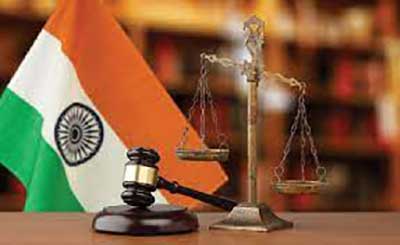GS-2: Functions and Responsibilities of the Union and the States, Issues and Challenges Pertaining to the Federal Structure
Key phrases- AIJS, federalism, district judge
Why in news
Only 2 states, two HCs are ready for All-India Judicial Service (AIJS): Law Ministry
Analysis:
What is AIJS?
- AIJS is a reform push to centralise the recruitment of judges at the level of Additional District Judges and District Judges for all states.
- In the same way that the Union Public Service Commission conducts a central recruitment process and assigns successful candidates to cadres, judges of the lower judiciary are proposed to be recruited centrally and assigned to states.
- The AIJS was first proposed by the 14th report of the Law Commission in 1958.
- The 42nd Constitutional amendment in 1976 amended Article 312 (1) empowering Parliament to make laws for the creation of one or more All-India Services, including an AIJS, common to the Union and the States.
Current system
- Subordinate judiciary generally comprises three cadres and there are two points of direct entry. The first point of direct entry is at the level of the Civil Judge/Civil Judge Junior Division, (through written examinations and interviews), which is the beginner’s cadre. From this, officers are promoted to the cadre of Senior Civil Judge and then the District Judge.
- Other point of direct entry is at the level of district judge (through written examination and interview), which is open for advocates who have practised for a minimum number of years (usually seven years)
Why do we need AIJS?
- It will ensure an efficient subordinate judiciary, to address structural issues such as varying pay and remuneration across states, to fill vacancies faster, and to ensure standard training across states
- The government has targeted the reform of lower judiciary in its effort to improve India’s Ease of Doing Business ranking, as efficient dispute resolution is one of the key indices in determining the rank.
- Addressing Judges-To-Population Ratio: A Law Commission report (1987) recommended that India should have 50 judges per million population as against 20.
- Higher Representation of Marginalised Sections of Society: According to the Government, the AIJS to be an ideal solution for equal representation of the marginalised and deprived sections of society.
- Attracting Talent Pool: The government believes that if such a service comes up, it would help create a pool of talented people who could later become a part of the higher judiciary.
- Bottoms-Up Approach: The bottoms-up approach in the recruitment would also address issues like corruption and nepotism in the lower judiciary.
- Idea of AIJS has been endorsed by the Law Commission on multiple occasions (1958, 1978 and 1986). Prior to this, the United Progressive Alliance government had also sought to set up AIJS in 2012.
Could it be counter productive?
- A centralised recruitment process is seen as an affront to federalism and an encroachment on the powers of states granted by the Constitution
- Won’t Address Unique Issues: This is the main contention of several states, which have also argued that central recruitment would not be able to address the unique concerns that individual states may have.
- Not Good for Local Reservation: Also, reservations based on caste, and even for rural candidates or linguistic minorities in the state, could be diluted in a central test.
- Opposition is also based on the constitutional concept of the separation of powers. A central test could give the executive a foot in the door for the appointment of District Judges, and dilute the say that High Courts have in the process.
- Language and representation, for example, are key concerns highlighted by states. Judicial business is conducted in regional languages, which could be affected by central recruitment.
- Arunachal Pradesh State is of the view that considering the fact that Arunachal Pradesh is purely a tribal state with its own peculiar and distinct tribal customs and ethos and the modes of rendering justice varies from tribes to tribes, the proposition of having a common judicial services would not be the right proposition and would create chaos and instability in their administration.
Views of Higher Judiciary on AIJS
- 1992: The Supreme Court directed the Centre to set up an AIJS in All India Judges’ Assn. vs Union of India
- 2017: The Supreme Court took suo motu cognizance of the issue of appointment of district judges, and mooted a “Central Selection Mechanism”.
Way ahead
- Establishment of AIJS makes a strong case because, if Civil servants can learn the local language of the state they are posted in, even a judicial service officer can. Thus, the language shouldn’t be a barrier.
- A Judicial service officer can be provided sufficient training to handle the job. A meritocratic judiciary is the need of the hour which is possible with a competitive recruitment process.
- AIJS should be designed in a manner to remove its shortcomings and it can be an effective solution to the vacancy in Judiciary
- Adequate judges can be made available only if they are recruited in large strength through AIJS just like we see in case of IAS, IPS, IFS and other civil services. Hence there should be no more delay.
Source: Indian Express









